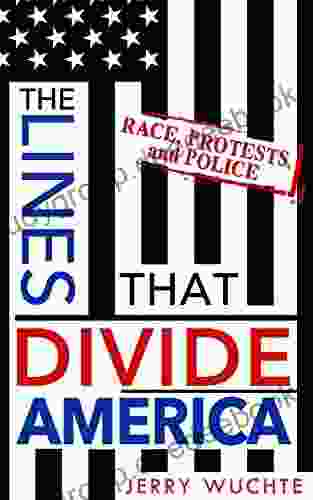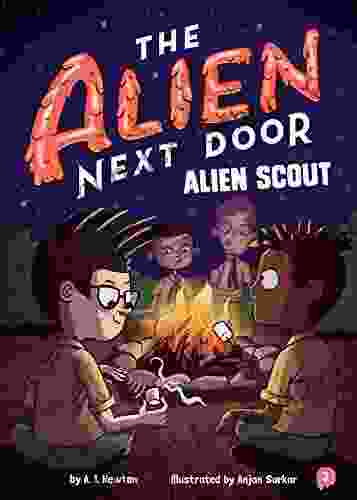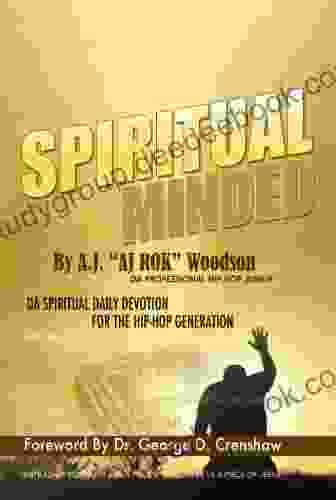Race Protests and Police: A Complex and Evolving Relationship


Race protests and police have a complex and evolving relationship. In the United States, protests against police brutality and racial injustice have been taking place for decades, but they have become increasingly visible and widespread in recent years. This is due in part to the rise of social media, which has made it easier for people to share videos and reports of police misconduct. It is also due to a growing sense of frustration and anger among many Americans, who feel that the justice system is not working for them.
5 out of 5
| Language | : | English |
| File size | : | 1961 KB |
| Text-to-Speech | : | Enabled |
| Enhanced typesetting | : | Enabled |
| Word Wise | : | Enabled |
| Print length | : | 111 pages |
| Lending | : | Enabled |
| Screen Reader | : | Supported |
| X-Ray for textbooks | : | Enabled |
The relationship between race protesters and police is often tense and adversarial. Protesters often see police as a symbol of oppression and violence, while police often see protesters as a threat to order and safety. This tension can lead to conflict, and in some cases, violence. However, there are also many examples of positive interactions between race protesters and police. In some cases, police have worked with protesters to ensure their safety and to facilitate their right to protest. In other cases, protesters have shown their appreciation for the police officers who have protected them.
The relationship between race protesters and police is a complex one, and it is likely to continue to evolve in the years to come. However, there is one thing that is clear: the issue of police brutality and racial injustice is a serious one, and it needs to be addressed. Protests are one way to raise awareness about this issue and to demand change.
A History of Race Protests and Police in the United States
The history of race protests and police in the United States is a long and complex one. The first major protests against police brutality occurred in the early 1900s, as African Americans began to organize to fight for their civil rights. These protests were often met with violence from police, and in some cases, protesters were killed.
In the 1950s and 1960s, race protests became increasingly common as the civil rights movement gained momentum. These protests were often led by Martin Luther King Jr. and other civil rights leaders. While some protests were peaceful, others turned violent, and protesters were often arrested and beaten by police.
In the 1970s and 1980s, protests against police brutality continued, but they were often overshadowed by other issues, such as the Vietnam War and the Watergate scandal. However, in the 1990s, protests against police brutality再度爆發,1991年洛杉磯警察局毆打非裔美國人駕駛羅德尼·金的事件就是一個突出的例子。
In recent years, protests against police brutality have become increasingly common, due in part to the rise of social media. Protests have been sparked by the deaths of unarmed black men and women, such as Michael Brown, Eric Garner, and Breonna Taylor. These protests have often been met with violence from police, and protesters have been arrested, beaten, and killed.
The Causes of Race Protests
There are many factors that contribute to race protests. These include:
- Police brutality: The excessive use of force by police officers is a major cause of race protests. Protesters often feel that police officers are targeting them because of their race, and they are demanding an end to police brutality.
- Racial profiling: The practice of stopping, questioning, and searching people based on their race is another major cause of race protests. Protesters feel that racial profiling is a form of discrimination, and they are demanding an end to this practice.
- Mass incarceration: The United States has the highest incarceration rate in the world, and African Americans are disproportionately represented in the prison population. Protesters believe that mass incarceration is a form of racial oppression, and they are demanding reforms to the criminal justice system.
- Economic inequality: African Americans face significant economic inequality in the United States. They are more likely to be unemployed, and they earn less than white Americans. This economic inequality contributes to the frustration and anger that many African Americans feel, and it is a major cause of race protests.
The Impact of Race Protests
Race protests have a significant impact on society. They can raise awareness about important issues, such as police brutality and racial injustice. They can also lead to policy changes, such as reforms to the criminal justice system. However, protests can also lead to conflict and violence. It is important for protesters and police to work together to ensure that protests are safe and peaceful.
The Future of Race Protests
The future of race protests is uncertain. However, it is clear that the issue of police brutality and racial injustice is not going to go away. Protests are likely to continue, and they may become more common in the years to come. It is important for protesters and police to work together to ensure that protests are safe and peaceful. It is also important for all Americans to work together to address the root causes of race protests, such as police brutality, racial profiling, mass incarceration, and economic inequality.
Race protests and police have a complex and evolving relationship. Protests are one way for people to raise awareness about important issues, such as police brutality and racial injustice. They can also lead to policy changes, such as reforms to the criminal justice system. However, protests can also lead to conflict and violence. It is important for protesters and police to work together to ensure that protests are safe and peaceful. It is also important for all Americans to work together to address the root causes of race protests, such as police brutality, racial profiling, mass incarceration, and economic inequality.
5 out of 5
| Language | : | English |
| File size | : | 1961 KB |
| Text-to-Speech | : | Enabled |
| Enhanced typesetting | : | Enabled |
| Word Wise | : | Enabled |
| Print length | : | 111 pages |
| Lending | : | Enabled |
| Screen Reader | : | Supported |
| X-Ray for textbooks | : | Enabled |
Do you want to contribute by writing guest posts on this blog?
Please contact us and send us a resume of previous articles that you have written.
 Book
Book Text
Text Story
Story Reader
Reader E-book
E-book Newspaper
Newspaper Paragraph
Paragraph Bookmark
Bookmark Shelf
Shelf Footnote
Footnote Manuscript
Manuscript Scroll
Scroll Codex
Codex Bestseller
Bestseller Library card
Library card Narrative
Narrative Biography
Biography Autobiography
Autobiography Memoir
Memoir Reference
Reference Encyclopedia
Encyclopedia Dictionary
Dictionary Thesaurus
Thesaurus Narrator
Narrator Resolution
Resolution Catalog
Catalog Borrowing
Borrowing Stacks
Stacks Archives
Archives Periodicals
Periodicals Study
Study Scholarly
Scholarly Reserve
Reserve Reading Room
Reading Room Literacy
Literacy Study Group
Study Group Awards
Awards Reading List
Reading List Book Club
Book Club Theory
Theory Cindy Lu
Cindy Lu Vladimir Shveda
Vladimir Shveda Russell W Belk
Russell W Belk Susan Rowland
Susan Rowland A J Mcdine
A J Mcdine Once Upon A Dance
Once Upon A Dance Ingar Brunnett
Ingar Brunnett Greg Wilkey
Greg Wilkey Charlotte Schwartz
Charlotte Schwartz Kenneth R Feinberg
Kenneth R Feinberg Martin W Bowman
Martin W Bowman Navana Kundu
Navana Kundu Jonathan Santlofer
Jonathan Santlofer Diane Goode
Diane Goode Christy Peterson
Christy Peterson Dennis J Deeb Ii
Dennis J Deeb Ii George Macaulay Trevelyan
George Macaulay Trevelyan Edwin Monk
Edwin Monk Carey Martell
Carey Martell Jennifer Hamady
Jennifer Hamady
Light bulbAdvertise smarter! Our strategic ad space ensures maximum exposure. Reserve your spot today!

 Chad PriceHedgehogs: A Comprehensive Guide to Purchasing, Care, Cost, Keeping, Health,...
Chad PriceHedgehogs: A Comprehensive Guide to Purchasing, Care, Cost, Keeping, Health,...
 Gilbert CoxMastering the Flute with William Bennett: A Comprehensive Guide for Aspiring...
Gilbert CoxMastering the Flute with William Bennett: A Comprehensive Guide for Aspiring...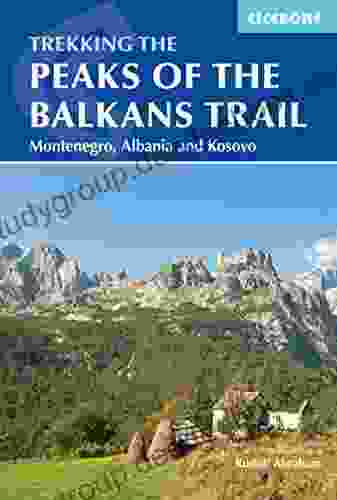
 Victor TurnerMontenegro, Albania, and Kosovo Cicerone Trekking: An Epic Adventure through...
Victor TurnerMontenegro, Albania, and Kosovo Cicerone Trekking: An Epic Adventure through... Hassan CoxFollow ·6k
Hassan CoxFollow ·6k Andy HayesFollow ·15.2k
Andy HayesFollow ·15.2k Hugh BellFollow ·5.8k
Hugh BellFollow ·5.8k Bryan GrayFollow ·9k
Bryan GrayFollow ·9k Cortez ReedFollow ·14.9k
Cortez ReedFollow ·14.9k August HayesFollow ·16k
August HayesFollow ·16k Kevin TurnerFollow ·17.6k
Kevin TurnerFollow ·17.6k Henry HayesFollow ·9.4k
Henry HayesFollow ·9.4k
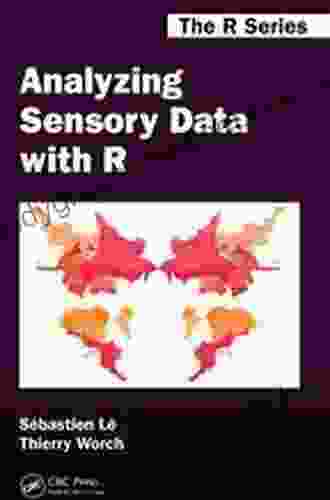
 H.G. Wells
H.G. WellsAnalyzing Sensory Data With Chapman Hall Crc The Series:...
Sensory data...

 Garrett Bell
Garrett BellThe Devil in the Flesh: A Haunting Tale from the Depths...
Nestled amidst the...

 Quentin Powell
Quentin PowellThe Art of Love: A Journey into Intimacy, Desire, and the...
Love is one of the most...

 Bobby Howard
Bobby HowardRV Inspection Deal Breakers: A Comprehensive Guide to...
Purchasing a recreational vehicle (RV)...

 Jordan Blair
Jordan BlairLong Way Home: A Journey Through the Piano and Vocal...
The piano and vocal chords are two of...
5 out of 5
| Language | : | English |
| File size | : | 1961 KB |
| Text-to-Speech | : | Enabled |
| Enhanced typesetting | : | Enabled |
| Word Wise | : | Enabled |
| Print length | : | 111 pages |
| Lending | : | Enabled |
| Screen Reader | : | Supported |
| X-Ray for textbooks | : | Enabled |


